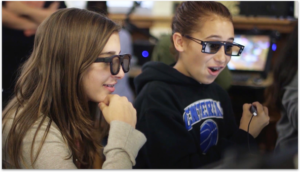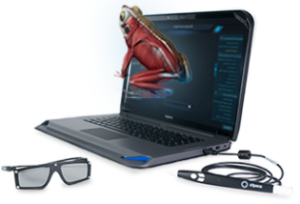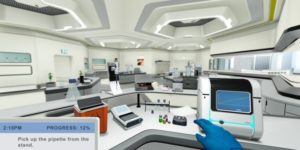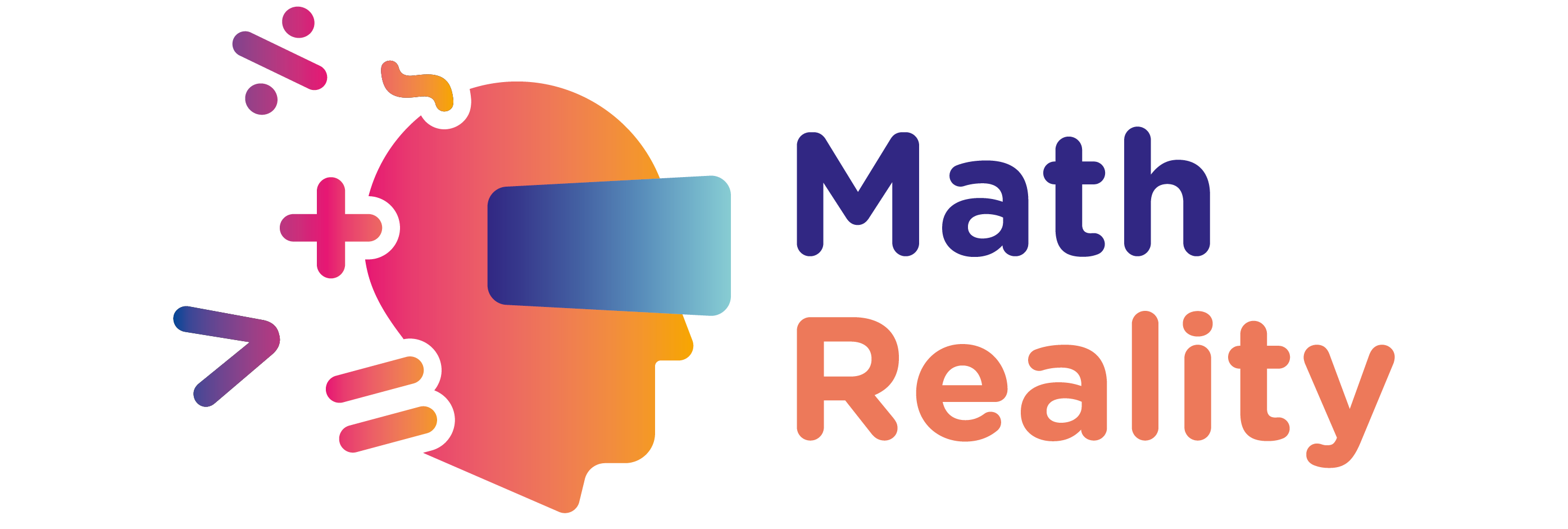VR as a training tool - example of use
New technologies can offer a chance to rethink the world of education and improve it in ways that are still unimaginable.
While many people continue to debate the use of Virtual Reality (VR) and its future development, we can already see that it is still very present in education. In preparation for our Math Reality project, which consists in co-developing and implementing an innovative teaching methodology based on the use of VR, the partners discovered several examples of its use. This project is co-funded by the European Union’s Erasmus+ program.
As a quick reminder, Virtual reality is a form of computer simulation, in which the participant is immersed in an artificial environment. It provides new forms and methods of visualization, based on the strengths of visual representations. VR can more accurately than by other means illustrate some features, processes, as it can provide greater experience in some ways indirect of « touching » concepts that were so far only theoretical.

Photo of a meeting – Mons (Belgique) –Math Reality Project ©Fermat Science
1/ Virtual Reality Science with zSpace
This school used zSpace workstations to teach different arguments, such as Newton’s laws of motion or anatomy. Students can interact with the subject taught in a creative and engaging way, by stacking blocks, setting up ramps, dropping out balls; or they can literally turn around a 3D heart, to understand how it is made and how it works, and feel its beat going faster or slower. Students can explore subjects at their own pace, without feeling ashamed of their mistakes, that become, according to constructionist learning, an opportunity to enhance their skills and knowledge.

Photo of ZSpace workstations ©ZSpace

2/ A virtual laboratory with Google
The virtual-reality biology lab of the University of Arizona is one of the most interesting ways this University adopted to teach this subject. Through Daydream VR, a Google operating system. After logging in, students must “wear” a lab coat and gloves in order to proceed. In this lab, students must take two blood samples from basketball players to determine their blood glucose level. Then, they can view what is inside a glucose molecule, and they are asked to put the molecule in the right place to demonstrate the Kreb cycle (a basic biochemical process).

Virtual Laboratory – Google Project with the company Labster ©Google
3/ In the human body with a virtual reality application: The Body VR

The Body VR : Journey inside a Cell @ The Body VR
A journey inside a Cell: thanks to this free VR experience, students can travel through bloodstream, discovering how blood cells work to spread oxygen throughout the body: students can also decide to “jump in” one living cell, in order to learn how it works (The Body VR).
4/ Discover mathematical theorems with CalcFlow:
This application, aimed to high school students, gives the opportunity to explore mathematical theorems and scenarios in VR. Features included are: manipulating vectors with hands, explore vector addition and cross product, creating a parametrized function and vector field.

Image of the app @ CalcFLow
5/ A journey into the world of geometry with Neotrie VR :
NeoTrie VR is a virtual reality software that offers the user the ability to create, manipulate and interact with geometric objects and 3D models in general. It allows total immersion. The Neotrie environment completely envelops the player, with the possibility to change the environment for with any 360° panoramic photo.
With the controls, which simulate virtual hands, the user can interact with 3D objects in the environment, create figures with vertices, edges, faces and easily modify elements.

@ Neotrie VR
